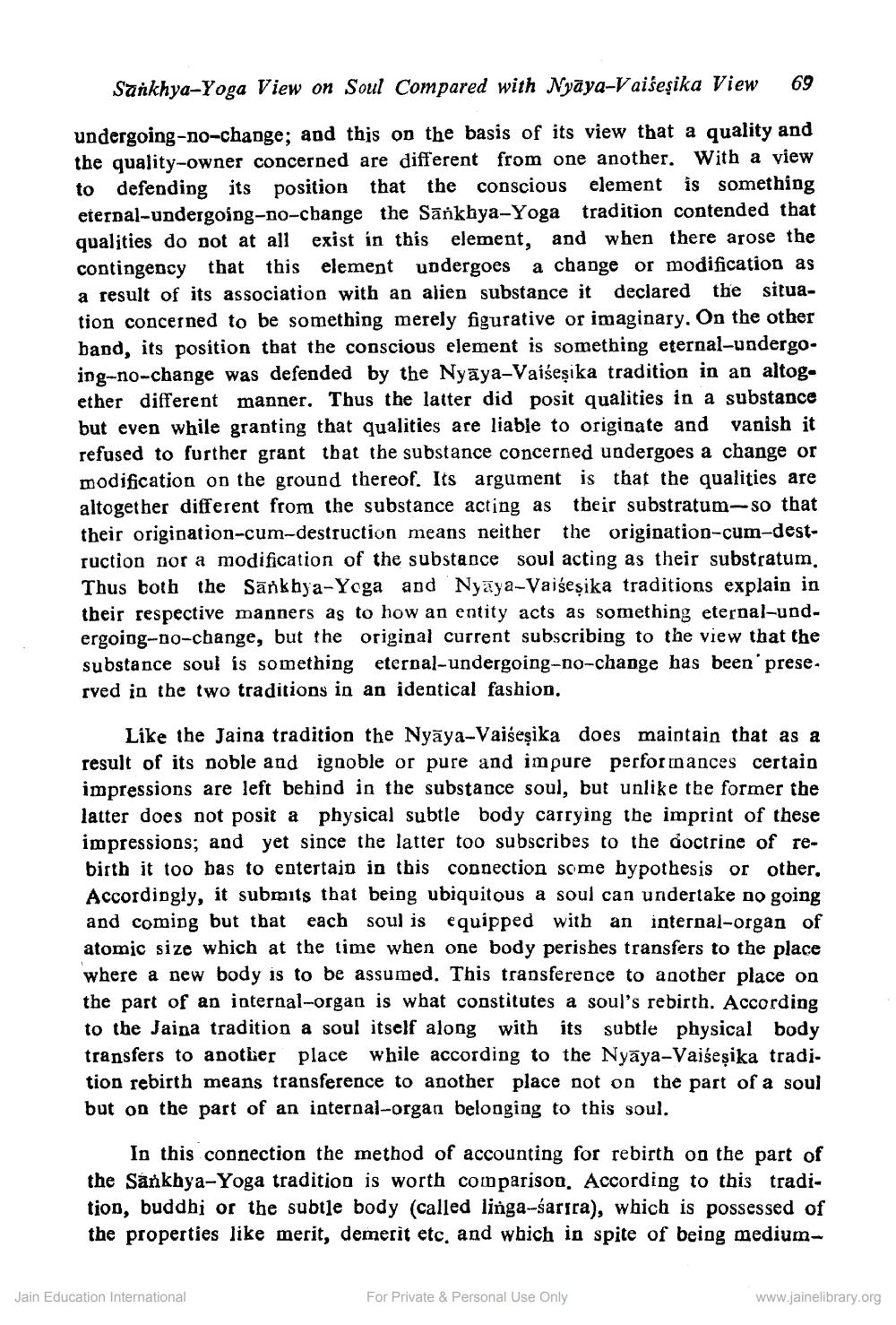________________
Sankhya-Yoga View on Soul Compared with Nyaya-Vaiseșika View
69
undergoing-no-change; and this on the basis of its view that a quality and the quality-owner concerned are different from one another. With a view to defending its position that the conscious element is something eternal-undergoing-no-change the Sankhya-Yoga tradition contended that qualities do not at all exist in this element, and when there arose the contingency that this element undergoes a change or modification as a result of its association with an alien substance it declared the situation concerned to be something merely figurative or imaginary. On the other band, its position that the conscious element is something eternal-undergoing-no-change was defended by the Nyāya-Vaiseșika tradition in an altog. ether different manner. Thus the latter did posit qualities in a substance but even while granting that qualities are liable to originate and vanish it refused to further grant that the substance concerned undergoes a change or modification on the ground thereof. Its argument is that the qual altogether different from the substance acting as their substratum-so that their origination-cum-destruction means neither the origination-cum-destruction for a modification of the substance soul acting as their substratum. Thus both the Sānkhya-Yoga and Nyāya-Vaiseșika traditions explain in their respective manners as to how an entity acts as something eternal-undergoing-1o-change, but the original current subscribing to the view that the substance soul is something eternal-undergoing-no-change has been prese. rved in the two traditions in an identical fashion.
Like the Jaina tradition the Nyāya-Vaiseșika does maintain that as a result of its noble and ignoble or pure and impure performances certain impressions are left behind in the substance soul, but unlike the former the latter does not posit a physical subtle body carrying the imprint of these impressions; and yet since the latter too subscribes to the doctrine of rebirth it too bas to entertain in this connection some hypothesis or other, Accordingly, it submits that being ubiquitous a soul can undertake no going and coming but that each soul is equipped with an internal-organ of atomic size which at the time when one body perishes transfers to the place where a new body is to be assumed. This transference to another place on the part of an internal-organ is what constitutes a soul's rebirth. According to the Jaina tradition a soul itself along with its subtle physical body transfers to another place while according to the Nyāya-Vaiseșika tradi. tion rebirth means transference to another place not on the part of a soul but on the part of an internal-organ belonging to this soul.
In this connection the method of accounting for rebirth on the part of the Sankhya-Yoga tradition is worth comparison. According to this tradition, buddhi or the subtle body (called linga-sarra), which is possessed of the properties like merit, demerit etc, and wbich in spite of being medium
Jain Education International
For Private & Personal Use Only
www.jainelibrary.org




